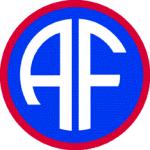Allied Force Headquarters facts for kids
Allied Force Headquarters (AFHQ) was a very important military office during World War II. It was like the main control center for all the Allied armies, navies, and air forces fighting in the Mediterranean area. AFHQ was active from August 1942 until the war ended in Europe in May 1945.
History
AFHQ was first set up in the United Kingdom on August 14, 1942. Its first leader was Lieutenant General Dwight D. Eisenhower. His main job was to command the forces for Operation Torch. This was a big plan to invade French North Africa in November 1942.
Eisenhower was first called "Commander-in-Chief, Allied Expeditionary Force." But the word "Expeditionary" was quickly removed. This was to keep the operation a secret. So, he became "Commander-in-Chief, Allied Force."
The headquarters moved to Gibraltar on November 5, 1942. Then, it moved again to Algiers on November 28, 1942.
Uniting the Forces
By late 1942, the Allied forces in North Africa needed to work together more closely. The British First Army, led by Lieutenant-General Kenneth Anderson, had landed from the west during Operation Torch. The British Eighth Army, led by Lieutenant-General Bernard Montgomery, came from the east. They had just won the Second Battle of El Alamein.
These two armies were getting close to each other. They needed one main command center. So, on February 10, 1943, AFHQ took control of the Eighth Army too. This helped all the Allied forces work as one team.
Key Operations and Commanders
In March 1943, AFHQ was in charge of several important groups. These included the Mediterranean Air Command and the 18th Army Group. It also oversaw the Mediterranean Fleet (the Allied naval forces) and the Fifth United States Army.
General Eisenhower led AFHQ until January 16, 1944. During his time, he oversaw two major invasions. The first was the Allied invasion of Sicily (called Operation Husky) which started on July 10, 1943. The second was the Allied invasion of mainland Italy on September 3, 1943.
Eisenhower then became a full general. He returned to the United Kingdom on January 14, 1944. Two days later, he took command of the Allied forces for Operation Overlord. This was the huge invasion of Normandy in France, planned for spring 1944.
After Eisenhower left, General Sir Henry Maitland Wilson took over AFHQ. His new title was Supreme Allied Commander, Mediterranean theater of operations.
General Wilson was in command for almost a year. In December 1944, he went to Washington, D.C.. He replaced Field Marshal Sir John Dill, who had passed away.
Wilson was then replaced by Field Marshal Sir Harold Alexander. He was the Supreme Commander and leader of AFHQ until the war ended.
After the War
After World War II, AFHQ became a smaller group. Its job was to finish up the combined command activities. Lieutenant-General Sir William Duthie Morgan was the last Supreme Allied Commander Mediterranean. AFHQ was officially closed down on September 17, 1947.
Commanders
- General Dwight D. Eisenhower - August 14, 1942 to January 16, 1944
- General Sir Henry Maitland Wilson - January 16, 1944 to December 1944
- Field Marshal Sir Harold Alexander - December 1944 to May 1945
- Lieutenant-General Sir William Duthie Morgan - May 1945 to September 17, 1947
See also
- Mediterranean Theater of Operations, United States Army (MTO) was originally called the North African Theater of Operations (NATO) and was the United States Army organisation fighting the Axis powers in North Africa and Italy during World War II.


